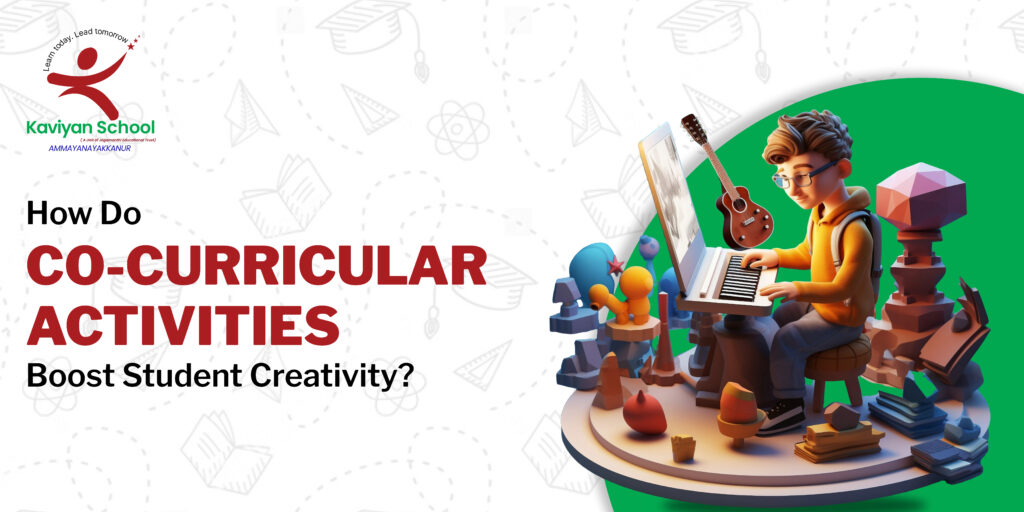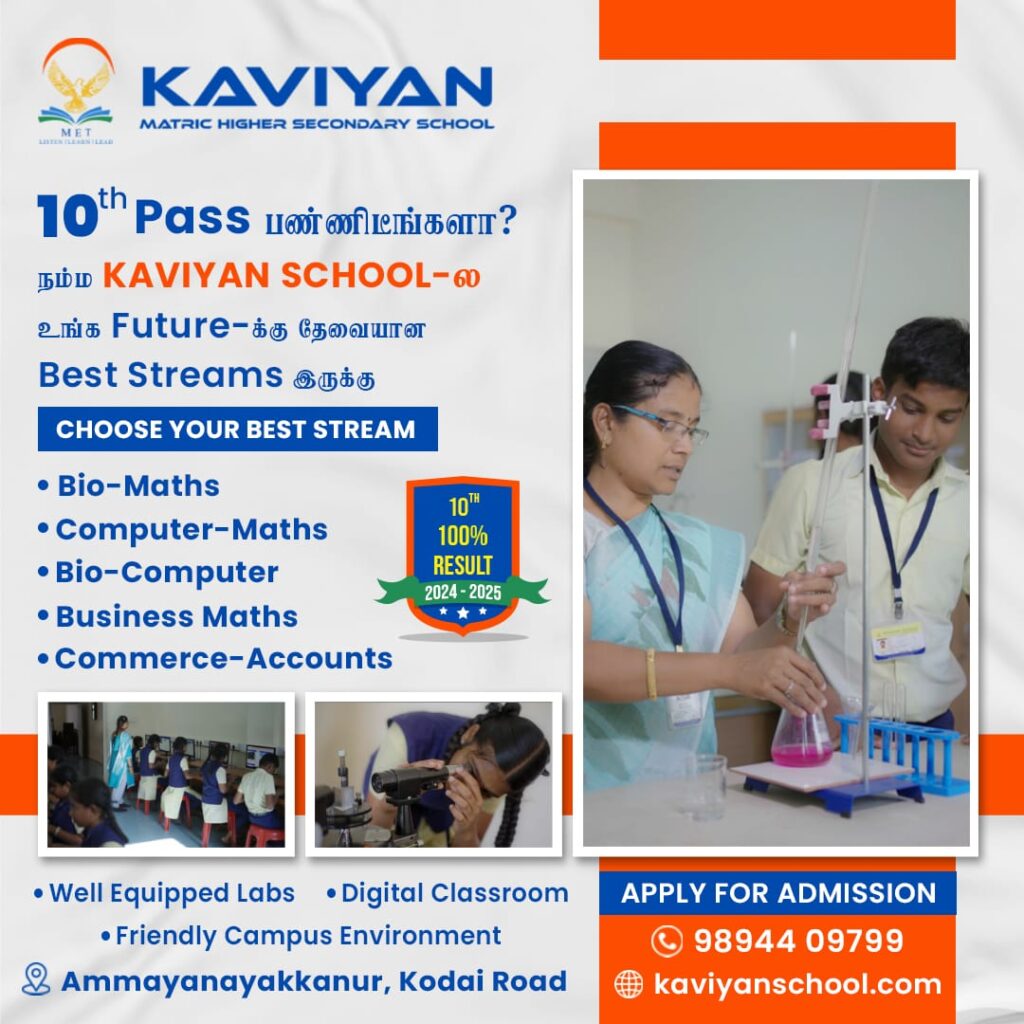
- Kaviyan Matric Hr Sec School Indira Nagar, Malayagoundanpatti Panchayat, Ammayanayakkanur Post, Pincode -624201


Co-curricular activities are more than just fun breaks from academic work. They play a significant role in enhancing students’ creativity, equipping them with essential skills for life beyond the classroom. Here’s how:
Encouraging Imagination and Innovation
Art and Craft: Activities like painting, sculpture, and digital art classes allow students to experiment with colors, shapes, and materials. For example, creating a mural can push a student to think about storytelling and artistic techniques in innovative ways.
Drama and Theatre: Participating in drama clubs or school plays encourages students to step into different characters and scenarios, enhancing their imaginative thinking and problem-solving skills.
Building Critical Thinking Skills
Debate and Public Speaking: These activities require students to analyze various perspectives, construct logical arguments, and communicate effectively. This constant engagement with diverse ideas stimulates their critical thinking and creativity.
Science Clubs: Hands-on projects, like building a simple robot or conducting experiments, help students apply theoretical knowledge creatively to solve real-world problems.
Fostering Collaboration and Teamwork
- Sports Teams: Working together to achieve a common goal in sports fosters creative teamwork. Students learn to strategize, innovate plays, and adapt quickly to changing situations.
- Music Bands and Choirs: Creating harmonious music requires each member to contribute their unique talent, promoting a blend of individual creativity with collective effort.
Enhancing Communication Skills
- Creative Writing Clubs: Writing stories, poems, or scripts enables students to express their thoughts and emotions creatively. It also helps them learn to articulate complex ideas clearly and engagingly.
- Language Clubs: Learning new languages through interactive activities like storytelling and role-playing games broadens students’ cultural perspectives and enhances their creative communication skills.
Providing Emotional and Social Growth
- Community Service Projects: Engaging in projects that benefit the community, such as environmental clean-ups or helping at local shelters, fosters empathy and social responsibility. This can inspire students to think creatively about making positive changes in their surroundings.
- Peer Mentoring Programs: Helping peers with academic or personal challenges encourages students to develop creative solutions and empathetic communication skills.
- Co-curricular activities are pivotal in nurturing creativity among students. By providing diverse experiences that challenge their thinking, encourage collaboration, and enhance communication, these activities lay a strong foundation for innovative and critical thinking skills. Participating in such activities not only makes students more creative but also prepares them for a successful future.
Latest Post


High School Admissions: Class IX–XII Guide for Parents
May 21, 2025 No Comments

Middle School Admissions: What Parents Should Know
May 14, 2025 No Comments

How to Choose the Right School for KG to Class V Kids
May 8, 2025 No Comments

